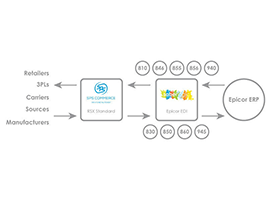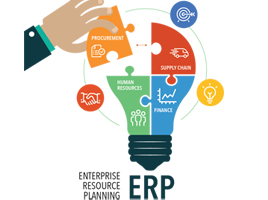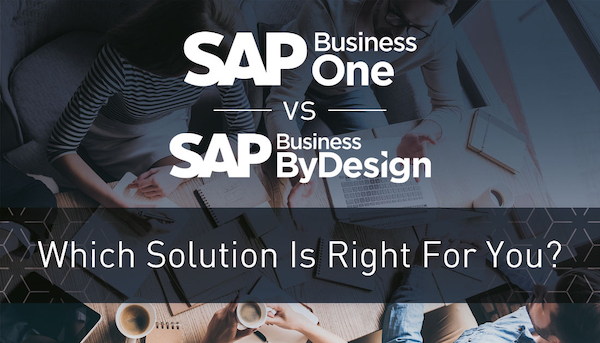The promise of self-driving cars may be approaching reality. Though the autopilot for cars is not yet ready for prime time, consider how far we have come from the simple cruise control of the past. Cruise control used to monitor one sensor (speed), and controlled one device (the accelerator) in order to keep speed constant – ignoring which direction the car was pointing in or whether other traffic was in the way. A true autopilot will need a whole variety of sensors to avoid traffic and other obstacles, obey local traffic laws, and get the passenger where they want to go. Further, the autopilot will need to be able to control steering, acceleration, braking, and other aspects of the car on behalf of the passenger. If successful, the autopilot for your car promises to upend entire business models.

Businesses applications could use an autopilot, too. ERP systems increasingly perform many of the information processing tasks needed by the business. Adding more sensors and access to greater controls – augmenting your ERP with IOT – can put you on the road to creating your own business autopilot and focusing your brain power on where you need to go (instead of how to get there).
ERP can trace its roots to the earliest days of computing. These early systems were simplistic by today’s standards, but they captured the essence of what information processing is all about: they gathered information, analyzed and processed that information, and returned new information and insights. Systems that managed inventory and logistics were among the earliest computerized systems simply because the information volumes and need for accuracy justified the expense of using computers instead of slide rules.
In 1940-41, a U.S. Army officer named Henry Aurand observed the use of punch cards in computerized supply management, and realized the potential of automation in military logistics. As late as the 1970s, punch cards were still a common way to get information into an inventory, billing, or supply system for additional processing. As systems took on increasing workloads, programmers needed to develop faster and more accurate ways of getting information into the system. Terminals allowed users to interact with the computers directly, providing real-time feedback to users when data was entered incorrectly. Beginning in the 1990s, the client-server era leveraged the power of the PC to provide a friendlier and more powerful interface between users and the systems that process business data. To improve speed and accuracy further, special-purpose machines were developed to connect directly to the system, such as time clocks attached directly to a time and attendance system. Initially, these special purpose machines were highly proprietary and relatively expensive, but they provided a significant return on investment – especially in high volume situations.
The business application autopilot senses more of what’s happening in the business, makes smarter decisions, and helps management deliver better results faster
The next revolution in enabling ERP solutions to gather more information faster and more accurately than ever before will come through leveraging the Internet of Things (IOT). The Internet of Things is a collection of initiatives in which everyday objects have connectivity to systems. At the simplest level, rather than relying on people to communicate information to the system, the IOT will enable ERP systems to gather data directly from the machines that are either performing or observing the work. Common objects like mobile phones have sensors that are constantly monitoring geo-location, orientation, temperature, sound (so Siri can answer when you ask a question), video (with multiple cameras), and more. Cameras, microphones, and other devices are increasingly everywhere in today’s world. A single machine on the plant floor may now broadcast real time information about its status from hundreds of sensors simultaneously. The potential of IOT is in leveraging all of that data-gathering power to improve the quantity, accuracy, and speed of information gathering for ERP – all while driving the cost of information gathering down.
Once the ERP system is connected to IOT devices for information gathering, ERP systems can begin to command and control those devices. Sending instructions to machines is not new, but IOT offers the potential to control more devices more effectively (and more affordably) than ever before. ERP systems will be tasked to monitor many more sensors about what is happening in the business in order to effectively command and control devices on the plant floor and in the warehouse. Just as your autopilot senses an obstacle and helps you avoid it, when your business application autopilot (your IOT-enhanced ERP) gets feedback from a temperature sensor indicating that one of the machines on the plant floor is running too hot, the autopilot can shut down the machine, alert management, and automatically recommend actions to reschedule work accordingly. The business application autopilot senses more of what’s happening in the business, makes smarter decisions, and helps management deliver better results faster.
Like the self-driving car, the business application autopilot should not be driverless. People must still ensure that the system is doing what it should, and must still make decisions about how to run the company. With IOT-enhanced ERP, common situations (even complex ones) can be detected and managed, freeing management to handle more strategic issues. ERP and IOT offer the real potential of running your business applications on autopilot.






